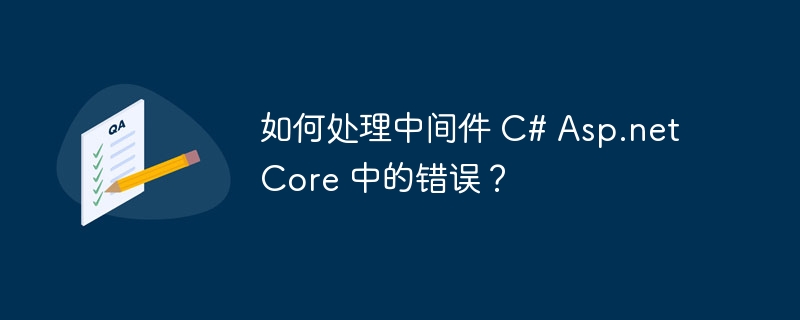
建立一個名為 CustomExceptionMiddleware 的新資料夾和一個類 ExceptionMiddleware.cs 位於其中。
我們需要做的第一件事是註冊 IloggerManager 服務並 透過依賴注入實現RequestDelegate。
RequestDeleagate類型的_next參數是一個函數委託,可以處理 我們的HTTP請求。
在註冊過程之後,我們需要建立InvokeAsync()方法 RequestDelegate無法處理沒有它的請求。
_next委託應該處理我們控制器的請求和Get操作 應該產生一個成功的回應。但是如果請求失敗(而且它確實失敗了, 因為我們正在強制異常),
我們的中間件將觸發 catch 區塊並呼叫 HandleExceptionAsync 方法。
public class ExceptionMiddleware{
private readonly RequestDelegate _next;
private readonly ILoggerManager _logger;
public ExceptionMiddleware(RequestDelegate next, ILoggerManager logger){
_logger = logger;
_next = next;
}
public async Task InvokeAsync(HttpContext httpContext){
try{
await _next(httpContext);
}
catch (Exception ex){
_logger.LogError($"Something went wrong: {ex}");
await HandleExceptionAsync(httpContext, ex);
}
}
private Task HandleExceptionAsync(HttpContext context, Exception exception){
context.Response.ContentType = "application/json";
context.Response.StatusCode = (int)HttpStatusCode.InternalServerError;
return context.Response.WriteAsync(new ErrorDetails(){
StatusCode = context.Response.StatusCode,
Message = "Internal Server Error from the custom middleware."
}.ToString());
}
}用另一個靜態方法修改我們的ExceptionMiddlewareExtensions類別 −
public static void ConfigureCustomExceptionMiddleware(this IApplicationBuilder
app){
app.UseMiddleware<ExceptionMiddleware>();
}在 Startup 類別的設定方法中使用此方法 -
app.ConfigureCustomExceptionMiddleware();
以上是如何處理中介軟體 C# Asp.net Core 中的錯誤?的詳細內容。更多資訊請關注PHP中文網其他相關文章!




